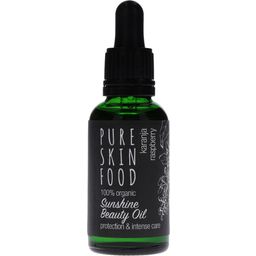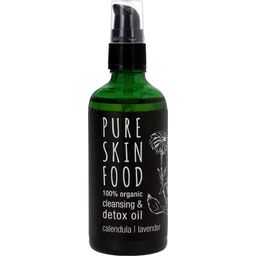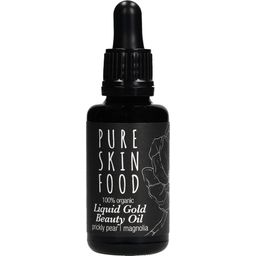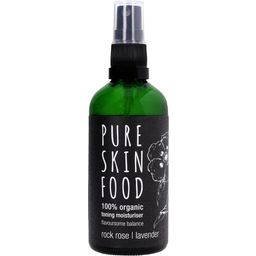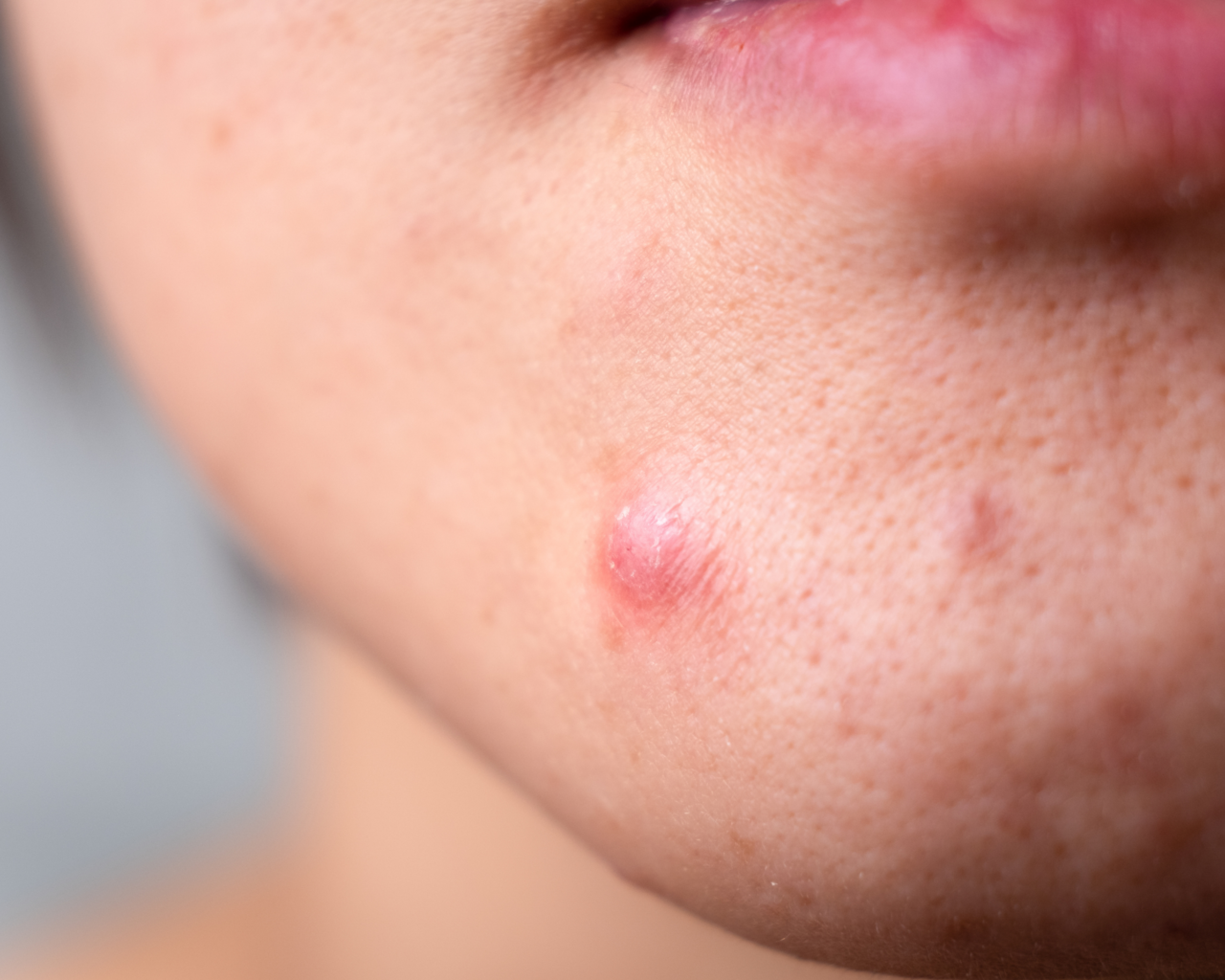

The 3 Most Common Types of Spots and How to Get Rid of Them!
Acne and pimples have many faces: Learn which 3 types of spots occur most frequently and what can help. Get rid of blackheads, pustules, and under-the-skin pimples effectively!
Acne can come in many different shapes and forms. Spots not only look different but have different causes and react differently to treatments. Find out how to treat different types of blemishes here!
The 3 most common types of spots:
- Blackheads
- Pustules in the upper layer of the skin
- Under-the-skin spots (blind pimples)
The right skincare to prevent acne & pimples:
Following a good skincare routine that suits your skin type is half the battle!
The right care can stop spots before they form. Some top tips are to not supply your skin with too much or too little oil, to use organic products, and to not use too many different products or too much makeup so your skin can breathe. Support skin regeneration and don't let your skin dry out.
An important step is to avoid contamination from the outside. For example, don't touch your face with unwashed hands, because bacteria and dirt promote inflammation. Cleanse your face thoroughly before going to bed to remove dirt and excess sebum. Antioxidant ingredients such as tocopherol or vitamin C reduce oxidative stress, which can create free radicals and promote inflammation.
Use a non-comedogenic facial oil:
- Organic Beauty Oil for Blemished & Combination Skin
- Organic Liquid Gold Well-Aging Serum for dry and mature skin
A good skincare routine should include:
- Pore-deep cleansing best done with a mild & thorough Cleansing Oil
- A Toning Moisturiser
- An Organic Face Oil that suits your skin type and provides optimal care & protection
- Clearing Face Masks 1-2 times a week, which can help to prevent impurities and under-the-skin spots
Of course, the food that we eat and hormonal changes also affect our skin. For example, you may have noticed that you always get the same type of pimples a few days before your period. That is almost certain to be down to hormones.
But that doesn't mean there's nothing you can do about it!
This is only an overview of the most common types of pimples. Try out the treatment carefully to make sure it is right for you. If there is no improvement or you have particularly painful and inflamed pimples and you don't know what the cause is - the next step is to see a doctor.
1. Blackheads
Blackheads are actually not as bad as you think. Why? Because they are the only type of spot that comes without inflammation - so they don't hurt. But of course that doesn't mean they look nice.
What helps against blackheads?
Pore-deep cleaning & vitamin C
To get rid of blackheads, it's best to cleanse your skin with a gentle but thorough cleansing oil. Afterwards, you can use a face mask with vitamin C to refine the pores. This has a clarifying effect and creates an even complexion.
To help stop blackheads appearing in the first place, we recommend our Organic Green Superfood Mask for Blemished & Combination Skin. It is antibacterial, promotes healing, and reduces inflammation. This makes it perfect for preventing blackheads and oily skin: nettle and tulsi powder have a regulating effect on sebum production and the skin's immune system, restoring the skin's natural balance.
2. Pustules
Pustules are everything you would think of as classic spots - small to medium-sized pustules that form yellow pus-filled bubbles on the surface after a few days at the latest. Even if they are inflamed they tend to be located in the upper layer of the skin so it requires little effort to get their contents to the surface. It's also easy to give your skin a helping hand.
What helps against pustules?
Face masks, hot compresses, or steam baths
Pustules are often caused by too much or too little sebum production, or also when the skin's own sebum can no longer drain away because pores are clogged. Try using a clarifying face mask for pore-deep cleansing.
But if the pustules are inflamed and red, or you have sensitive skin, we recommend treating them with hydrolates. A hot compress sprayed with a clarifying and soothing toner, for example, can be a good treatment.
Anti-inflammatory toners for acne & blemished skin:
A balancing steam bath with a few drops of lavender essential oil is also balancing while rose has a clarifying effect and moisturises. The warm steam opens the pores and allows sebum to drain away.
Even if it's tempting and seems like a quick fix - keep your hands off! Squeezing spots is rarely the solution. The pus might be gone but this aggravates the underlying inflammation and may delay the healing process even more.
3. Pimples under the skin
Probably the nastiest type of pimples is the deep-seated, under-the-skin spots, which can sometimes be really painful. They have the same cause as pimples on the surface of the skin but are usually just deeper.
This type of spot often appears before your period, but can also be caused by a high-sugar diet and alcohol. Fast food is particularly good at causing under-the-skin spots on your chin.
What helps against under-the-skin spots?
Following a skincare routine with organic and effective products, cooling the skin
Prevention really is better than cure. Try to stick to a healthy and balanced diet and use regular face masks.
Support the regeneration of the skin so that nasty blind pimples can't form so easily in the first place. The fruit acid peel in our Organic Strawberry & Superfoods Skin Glow Mask accelerates skin renewal, cleanses, and refines pores.
Our Organic Superfood Peeling Mask for a Refined Complexion with fine seeds as exfoliators also stimulates cell renewal, helping to prevent under-the-skin spots.
If it's already too late and that red bump is already clearly visible, here's what you can do:
Cool the affected area by putting your Toning Moisturiser in the fridge, spraying it on a cleansing pad, and leaving it on for 5-10 minutes. You can also use ice cubes - just make sure never to put an ice cube directly on your skin.
This can soothe the inflammation. If it doesn't get better, it's time to go to the doctor!
A zinc ointment can also help to get rid of under-the-skin spots: Zinc has an antiseptic, anti-inflammatory effect, and dries out pimples.
The problem with zinc:
The base for zinc ointments is often lanolin, which may be comedogenic, or it might contain mineral oil-based ingredients like petrolatum.
What's more, zinc is a mineral ingredient that is mined or extracted, meaning that it cannot be certified as organic. Only ingredients that are grown can be given this certification.
Harmless, vegan & organic alternatives to zinc:
- Chamomile: It dries out blackheads and pimples, has a calming effect, and helps to reduce inflammation
- Aloe Vera: Provides intensive moisture, has a cooling and balancing effect.
- Yarrow: Has an anti-inflammatory, slightly astringent and healing effect in the top layer of the skin.
- Jojoba oil: Proven remedy for pimples which is suitable for the treatment of oily and sensitive skin.
We hope you found your type of spot in this article and a treatment method that suits you and helps!
As always, if your acne is severe, make sure to see a doctor.
-
Delivery in 3 business days.
We deliver worldwide to
more than 40 countriesSecure payments
with SSL encryption technology
